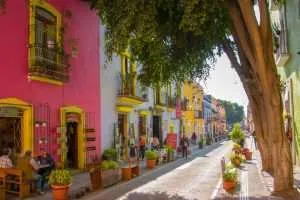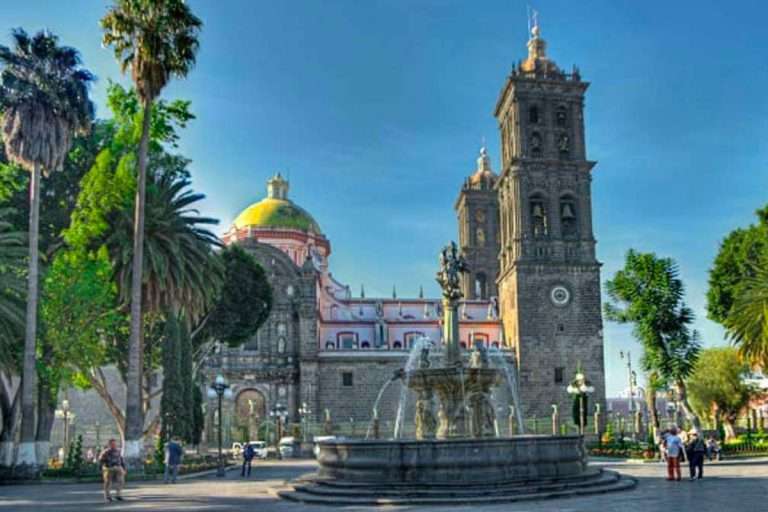
Marvel at the splendor of its elegant colonial buildings, streets and flavors that live up to its nickname "City Of the Angels".
A legend is responsible for this beautiful city being known as Puebla de los Angeles.

Puebla's Zócalo is one of the best preserved in Mexico and was recently remodeled.
In the style of ancient Spain, the city of Puebla was founded around a central park, a building that served as the Municipal Palace and a church, which in this case was the Cathedral Basilica of the Immaculate Conception of Mary.
In viceregal times the Zócalo had other functions since this was where the sentences handed down by the Audiencia were carried out, so here there was a wooden pillory and a gallows, besides this space was used to carry out other theatrical performances, dances and in celebrations a bullring and cavalry games were installed.
Today, this is a spacious park that is a safe open space that offers culture. You can admire artistic pieces that are constantly changing and give the square a modern look.
In the square itself, visitors can enjoy the arches, see the Town Hall and be fascinated by the impressive architecture of the cathedral.
And at the end of a tour of the area, the best thing to do is to relax and enjoy the view in one of the cafes that surround the zocalo, or eat delicious regional food in one of the popular restaurants.
The Zócalo was built in 1531 in the same year the city was founded. It is believed that it was in 1905 when it began to be called Zócalo.
The plaza between 1531 and 1854 was a clothing and food market. During this period, it was baptized as tiánguis.
The famous fountain of the Zocalo dedicated to San Miguel Arcangel was built in 1773 to supply fresh water to the people of Puebla.
The fountain was built by José Francisco Rabanillo and designed by Juan Antonio Santa María Inchaúrregui.
The fountain has been moved several times: in 1873 it was dismantled for modernization works until 1996, when it returned to the city center.
The Fountain of San Miguel Arcangel and pays homage to the main patron saint of the city of Puebla.
In addition, the fountain has four figures of angels that support a basin from which emerges a column on which St. Michael the Archangel rests.
This magnificent fountain was built in 1777 by the greatest master of architecture, Juan Antonio de Santamaría, and replaced the one from the 16th century.
The garden of the zocalo of Puebla has four beautiful sculptures that adorn each of its corners. These were donated in 1926 by the Spanish, English, Syrian-Lebanese and German colonies settled in Puebla.
The Path of Angels, located to the east of the esplanade of the Zócalo, is a white monument made of cut and enameled metal. It is the work of Jan Hendrix and pays homage to Ángeles Espinosa Yglesias Rugarcía, a Puebla native and promoter of culture, the arts and the state's historical heritage.
The Fountain of St. Michael the Archangel, with four figures of angels that support a basin from which emerges a column on which St. Michael rests.
Monument to the Siege of Puebla It is made up of a golden cup that is placed on a pedestal in recognition of the event that took place in 1863 and for which Puebla received the name of "heroic". Located in front of the Municipal Palace and is dedicated to the Benemérito de Oriente Army for its defense of the city.
Address: Don Juan de Palafox y. Mendoza Av. Mendoza, Centro Histórico de Puebla, 72000 Puebla, Pue.
More Official Info: Visit Puebla
Marvel at the splendor of its elegant colonial buildings, streets and flavors that live up to its nickname "City Of the Angels".
A legend is responsible for this beautiful city being known as Puebla de los Angeles.
The country is a land of contrasts. It has it all: a rich history and culture, a warm and pleasant climate, a varied geography, an impressive nature, a tasteful gastronomy and a friendly and helpful population ... in short: Mexico can fulfill all your wishes!